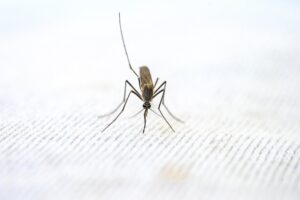
INTRODUCTION
It is a gathering of maladies brought about by class Plasmodium, and transmitted to man by specific types of tainted, female Anopheline mosquito; clinically portrayed by scenes of chills and fever with times of inertness, extension of spleen and optional weakness.
AGENT FACTORS
Four species of Plasmodium (malaria parasite) are responsible for malaria.
1. Plasmodium vivax
2. Plasmodium malaria
3. Plasmodium ovale
4. Plasmodium Falciparum
Life History
(1) Human (Asexual) Cycle
Pre-Erythrocytic Phase
Sporozoites in the saliva of the female anopheles mosquito .> injected in human blood by mosquito bite.> Invade liver cells where they grow and multiply. 1-2 wks. They become hepatic schizonts .> Which rupture and release. After merozoites in the blood.
Erythrocytic Phase
Merozoites invade RBC where they grow & multiply and pass through the stages of trophozoite & schizont.> RBC ruptures & liberates merozoites which infect other fresh RBCs.
Note:
[The duration of Erythrocytic phase is constant for each species of malarial parasite hrs. For P. falciparum, P. vivax & P. ovale. 72 hrs. For P. malaria]
Gametogenic Phase
Some merozoites become male & female gametocytes > Which are sucked in when anopheles mosquito bites an infected human being.
(2) Mosquito (Sexual) cycle
Genotypes are ingested by anopheles mosquito .. >Exflagellation of male
gametocyte occurs in the stomach..>4-8 thread-like filaments (microgametes) are formed .. > Maturation of females gametocyte (macrogamete) occurs .. >> Fertilization takes place…. > Zygote is formed known as ookinete ..> Oocyst formation occurs from ookinete .. > Migration of sporozoites to the salivary glands takes palace .. > Mosquito now becomes infected to man.
The reservoir of infection
Man is the only reservoir that harbors the sexual forms of the parasite.
Period of Communicability
Malaria is communicable as long as mature, viable gametocytes exist in the circulating blood insufficient density to infect vector mosquitoes.
HOST FACTORS
Age
Affects all ages but newborn infants are resistant with P Falciparum due to high cone Foetal hemoglobin.
Males are more at risk than temples.
Individuals with AS Hb (sickle-cell trait) have a milder illness with P. Falciparum than those with named AA Hb.
Social & Economic Factors:
Malaria is more prevalent in under developed countries.
Man has no natural immunity against malaria.
ENVIRONMENTAL FACTORS
Season
Maximum prevalence is from July to November
Temperature
Optimum temp. for the development of malaria parasites in the insect is b/w 20°C-
Relative humidity of 60% is considered necessary for mosquitoes to live their normal life span
Rainfall
Rain provides opportunities for the breeding of mosquitoes and may give rise to epidemics.
VECTOR OF MALARIA
(1) Anopheles culicifacies (in rural areas)
(2) Anopheles stephensi (in urban areas).
MODES OF TRANSMISSION
Vector Transmission
Intestinal sickness is transmitted by the nibble of specific types of contaminated female Anopheline mosquitoes.
Direct Transmission
Malaria may be induced accidentally by hypodermic intramuscular or intravenous injections of the blood of plasma e.g. blood transfusion, malaria in drug addicts.
Congenital Malaria
The inherent disease of the infant from a tainted mother.
INCUBATION PERIOD:
This is the length of time b/w the infective mosquito bite the first appearance of clinical signs, of which fever is the most common; and the period is usually not less than 10 days.
INCUBATION PERIOD 12 (9-14) days
1. Falciparum malaria
2. Vivax malaria
14 (8-17) days
3. Quartan malaria
28 (18-40) days
4. Ovale malaria.
17 (16-18) days
CLINICAL FEATURES
A typical attack comprises three successive stages.
(1) Cold Stage
(a) Sudden beginning of fever with rigors and impression of outrageous virus.
(b) Pt. desires to be covered with blankets.
(c) Lasts b/w 15 min. and one hour.
(2) Hot Stage
(a) Temp. may rise to 106 F
(b) Pt. feels burning hot & casts off his clothes.
(c) Intense headache.
(d) It lasts from 206 hours.
(3) Sweating Stage
(a) Fever comes down with profuse sweating
(b) Lasts from 2-4 hours.
Note: The febrile paroxysms occur with definite intermittent periodicity repeating every third or fourth day depending upon the parasite involved.
CLINICAL FORMS OF FALCIPARUM MALARIA
(1) Cerebral Malaria
(a) Marked elevation of body temp.
(b) Headache
(c) The rapid deterioration in consciousness
(d) Convulsions
(e) Coma
(f) Death
(2) Algid Malaria
(a) Severe vomiting
(b) Diarrhea
(c) Peripheral circulatory collapse
(3) Septicaemlc Malaria
High continuous fever
Vomiting
Signs & symptoms mimicking typhoid fever.
Hepatorenal syndrome.
Spontaneous splenic rupture.
(4) Black-water Fever
1. Abrupt onset of fever
2. Marked hemolysis
3. Hemoglobinuria
4. Vomiting
5. Circulatory collapse
6. Acute renal Failure
LAB INVESTIGATION
Thick & thin film of peripheral blood demonstrates the malarial parasite.
Presumptive Treatment
(1) It means that all fever cases are assumed to be due to malaria.
(2) The aim of this treatment is to relieve symptoms possibly due to malaria and to reduce
mortality & morbidity.
(3) Single-dose of 4 aminoquinoline in 600 mg dose is administered for an adult.
- What are the common modes of malaria transmission, and how can individuals protect themselves?
- Can you highlight the key clinical features of malaria, aiding in early detection and treatment?
- How does understanding the mode of transmission empower communities to prevent malaria effectively?
- What role does timely recognition of clinical symptoms play in the management of malaria cases?